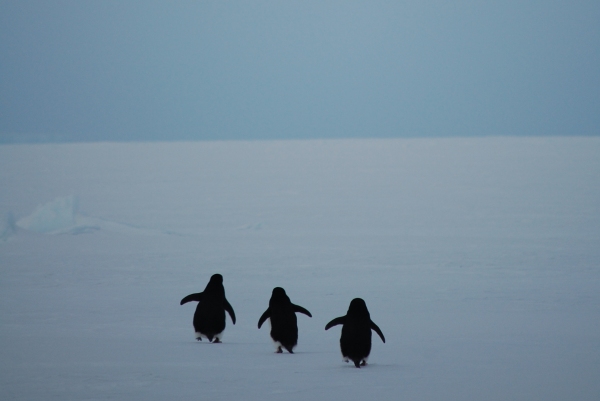Top of Natalie Robinson’s to-do list right now is to work out exactly what she’s brought back from Antarctica.
The NIWA marine physicist has recently spent five weeks on the ice leading a team of researchers trying to solve one of the great conundrums facing scientists researching climate change: why has Antarctic sea ice been expanding despite it forming in a warming ocean?
Dr Robinson may just have part of the answer but right now it lies within the massive amount of information that must now be pored over and analysed following her trip south.
“The first thing I’ve got to do is work out what I’ve got. We have come back with an enormous amount of data, which is fantastic because it was a risky experiment – you put things in the water and then you have to wait to see what happens.”
The team were based on sea ice in McMurdo Sound, 60km from Scott Base. Eight converted shipping containers became home, two with removable floors so they could drill into the ice to access the ocean below.
Perfect conditions for science on the ice
Under the three metres of sea ice at the front of the ice shelf, they discovered a six metres thick layer of ice crystals, known as platelet ice, that form in water that is supercooled – or colder than freezing – when it rises towards the surface. This supercooled water contributes to thickening of sea ice, especially near the coast.
Part of Dr Robinson’s Marsden-funded project involves testing how the crystals affect turbulence and heat transfer in the upper ocean as they grow and cluster together in this supercool water.
“We targeted the area where the water flows out from under the ice shelf. The idea was that, close to the ice shelf there’d be lots of ice crystals, and as you move away from the ice shelf, that layer of crystals would get thinner. I couldn’t really be sure what I’d find, but it was great that we got as much as six metres to work with.
“About 50km further north I conducted another experiment looking at flow speeds around a grounded iceberg. There the platelets were about half a metre thick although we don’t know yet if that’s directly connected to the six metres we got at the edge of the ice shelf.”
The team also set up moored instruments at three different sites on the sea ice, again by drilling a 25cm diameter hole down through the ice. The platelet crystals were cleared out of the hole scoop by scoop – a process that took about an hour. Then a line, suspended from a tripod, on which 15 autonomous instruments were attached to collect data on temperature, salinity and currents at down to 250 m was fed through each hole.
Team member, NIWA marine physics technician Brett Grant – a veteran Antarctic visitor - said conditions were perfect, and the team was able to achieve more than they had expected.
“Natalie had a very ambitious plan and in normal conditions we wouldn’t have been able to achieve it, but we didn’t lose a single day to bad weather.”
There were, however, several issues to overcome. Because the water is so cold, ice forms on the ropes, as well as on the instruments themselves, and also can make the holes freeze up, potentially trapping the instruments.
But, as Mr Grant says, Antarctica is an amazing place to work.
“It’s great to be in an environment where there is so much support for collaborating and working to get the most out of the New Zealand and international research programmes. Everyone pulls together when it comes to field logistics and technical challenges to make things happen.”
Solving the climate puzzle
Dr Robinson’s first deadline for her work is a conference in February so by then she will be several mini steps closer to solving her part of the puzzle.
Ultimately her research will provide new information that can be fed into climate models, improving the simulation of our future climate.
“One of the outstanding challenges of climate modelling is to get the trends in the growth of Antarctic sea ice correct,” she says, “and this is what we think we can contribute to.”

